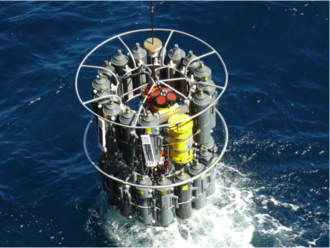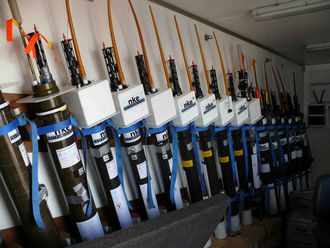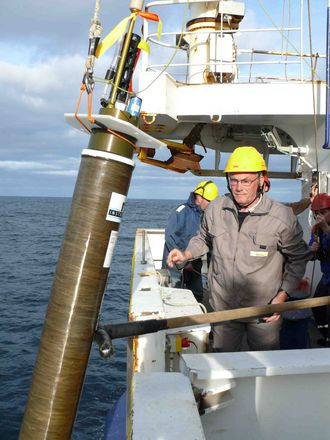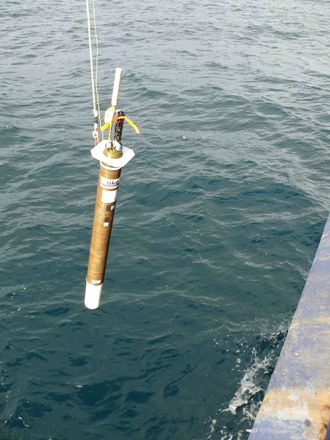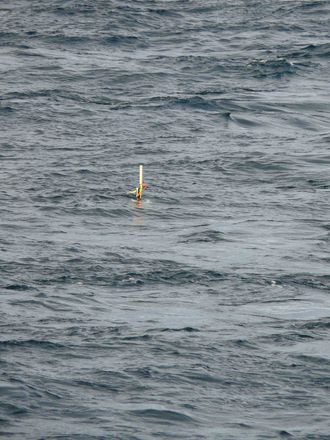By Camille Lique
First, if you want to know where we are right now, have a look here.
We are now running measurements at full speed. This means that we work in shifts and observations are carried out continuously, 24 hours a day. Part of the observations during the RREX campaign is done during CTD operations (around 120 stations are planned in total). This means that we stop every so often to lower the CTD package from the surface to the bottom of the sea, which carries a few sensors measuring the temperature, salinity, and dissolved oxygen content. Additionally, the CTD package carries bottles, which we close at different levels. Once the package is back at the surface, we sample water in the different bottles, allowing us to calibrate the sensors and to carry more measurements (pH, levels of nutrients). Last, the CTD package is used to measure the ocean current profile at each station, using the ADCP mounted on the CTD package.
In addition to the CTD operations, we will deploy a bunch of Argo buy strattera online floats during the RREX cruise. An Argo float is an autonomous drifting profiler, which is programmed to drift freely around 1000m and every 10 days, change its buoyancy to dive to a depth of 2000m and then go to the surface, measuring a temperature and salinity profile. The float then transmits its data to a data center via a satellite and starts a new 10-days cycle.
As of today, around 3000 Argo floats are drifting in the ocean (a float lasts around 4 years). Their data is used by the meteorology and oceanography forecast centers, as well as by researchers in order to quantify and study ocean warming and its possible consequences for sea-level rise.
A few days ago, deployed a special Argo float: A Deep-Arvor. This Argo float is indeed able to reach depths as deep as 4000m. It is only the fifth of this kind ever deployed, and the float has already transmitted its first observations!
- Ifremer/RREX/B. Ferron
- ©Ifremer
- Deployment of the Deep Arvor -©Ifremer
